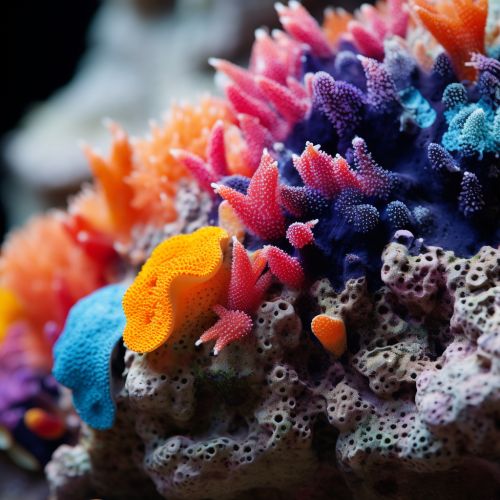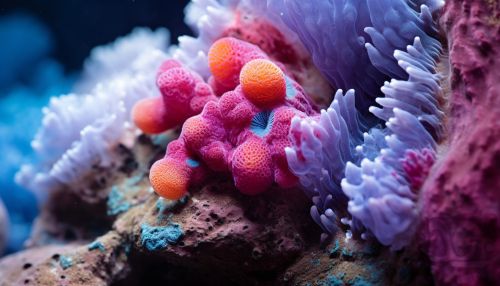Sponge
Introduction
A sponge is a simple multicellular organism belonging to the phylum Porifera. They are one of the most primitive forms of multicellular life, with a lineage that dates back to the Precambrian era. Sponges are characterized by their porous bodies, which are typically covered with openings or ostia. These organisms are primarily marine, although some species can be found in freshwater environments. Sponges play a crucial role in marine ecosystems, contributing to nutrient cycling and providing habitat for a variety of other organisms.


Anatomy and Physiology
Sponges have a unique body structure that is fundamentally different from other multicellular organisms. They lack true tissues and organs, and their bodies are composed of a few different types of cells that perform various functions.
Cellular Structure
The body of a sponge is composed of two layers of cells, the outer pinacocytes and the inner choanocytes, separated by a gelatinous matrix called the mesohyl. The pinacocytes form the outer skin of the sponge, while the choanocytes, also known as collar cells, line the inner chambers and are responsible for generating water flow through the sponge and capturing food particles.
Water Flow and Feeding
Sponges are filter feeders, drawing water in through tiny pores in their body wall, filtering out organic particles and microscopic organisms, and expelling the filtered water through larger openings called oscula. This water flow is generated by the beating of flagella on the choanocytes, and it is this constant flow of water that provides the sponge with both food and oxygen.
Reproduction
Sponges have a variety of reproductive strategies, including both sexual and asexual reproduction. Many species are hermaphroditic, producing both eggs and sperm, although not typically at the same time. Sponges also have the ability to regenerate from fragments, a form of asexual reproduction known as budding.
Ecology and Distribution
Sponges are found in a wide range of aquatic environments, from freshwater rivers and lakes to the deepest parts of the ocean. They are most diverse in marine environments, particularly in coral reef ecosystems, where they contribute to the complex structure of the reef and provide habitat for many other organisms.
Role in Ecosystems
Sponges play a significant role in nutrient cycling in marine ecosystems. They filter large volumes of water, extracting organic particles and microscopic organisms, and excreting waste products that are used by other organisms. Some sponges also have symbiotic relationships with photosynthetic organisms, which live within their tissues and provide them with additional nutrients.
Threats and Conservation
Sponges face a variety of threats, including pollution, habitat destruction, and climate change. However, they are also resilient organisms, capable of regenerating from fragments and recolonizing disturbed areas. Conservation efforts for sponges typically focus on protecting their habitats and maintaining water quality.
Economic Importance
Sponges have been used by humans for thousands of years, primarily as cleaning tools. The soft, absorbent bodies of certain sponge species make them ideal for this purpose. In addition, some sponges produce bioactive compounds that have potential uses in medicine. Research into the medicinal properties of sponges is an active area of study.
